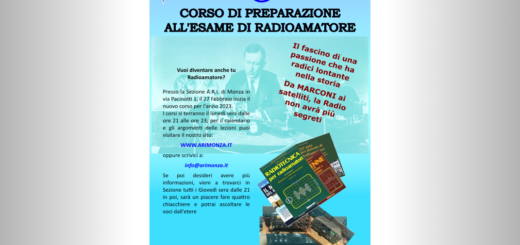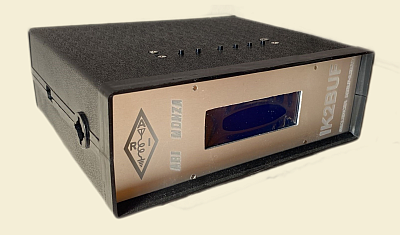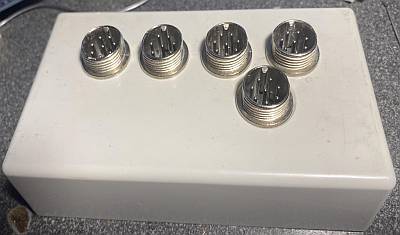contatto 17 ottobre 2019
ARISS school contact planned for Campolongo Maggiore and Ladispoli, Italy
An International Space Station school contact has been planned for Luca Parmitano KF5KDP with participants at : Istituto Comprensivo Statale “Diego Valeri”, Campolongo Maggiore, Italy and Istituto Comprensivo Ladispoli, Ladispoli, Italy.
The event is planned Thursday October 17, 2019. It is scheduled to begin at approximately 08.49 UTC, which is 1O.49 CEST.
The contact will be conducted in Italian.
The contact will operated by IQ3RW and IKØWGF. The downlink signals will be audible in parts of Europe on 145.800 MHz FM.
The event will be live streamed from IQ3RW on Sezione ARI Riviera del Brenta youtube channel: www.youtube.com/channel/UCDwdfkmV7_z2xtZP07Js3Rw?fbclid=IwAR2cvdFuG_oNRGmstWkJ5IPpWN7xjENlMwW4Xrpr4RGh6EhG7BsA3TWtCKU
This ARISS Europe News Bulletin is distributed to 2700 subscribers.
School Information:
Istituto Comprensivo Statale “Diego Valeri”
The Institute is located in the province of Venice on the border with that of Padua. It is a municipality with a very large territory and is covered, scholastically, by a school for children, three plexuses of primary school and two middle schools. The Institute boasts the best musical laboratory in Italy and almost all of the students are able, not only to engage in the study of a musical instrument and to read music but also to play in an orchestra. The students involved are middle school pupils with ages between 12 and 14 years.
Istituto Comprensivo Ladispoli1
The I.C.Ladispoli1 is one of the four Institutes including Ladispoli, a metropolitan city of capital Rome26 teachers work in the Infancy school; school time is 25 hours weekly for the reduced-time sections (8.05-13.05) and 40 hours per week for all the other sections in normal time (8.05-16.05). 83 teachers work in the Primary School; school time is 25 hours per week for the normal time sections (8.05-13.05) and 40 hours per week for all the others full-time sections (8.05-16.05).The Secondary Secondary School is still “young”, but growing: it is composed of the classes of classes A and B. The project will affect the pupils of the first grade secondary school classes, first, second and third classes. The alumni are aged between 11 and 13 years.
Students First Names & Questions:
Istituto Comprensivo Statale “Diego Valeri” and Istituto Comprensivo Ladispoli1
1. Sofia: Come fai ad avere una dieta equilibrata mangiando cibo liofilizzato?
2. Daniele: In questi mesi quali esperimenti hai portato a termine nel laboratorio spaziale? Quali sono stati i risultati?
3. Silvia: Qual è la tua giornata tipo?
4. Flaminia: Abbiamo letto una notizia che riguarda un esperimento con i girini per capire la rigenerazione dei tessuti. Come procede questo esperimento?
5. Kleio: Cosa si prova a guardare lo spazio dalla navicella spaziale?
6. Matteo: Quali esperimenti hai progettato con gli altri astronauti?
7. Aurora: Come si lavano I vestiti nella navicella?
8. Daniel: Dopo essere già stato una volta nello spazio cosa hai provato a tornarci nuovamente?
9. Rebecca: Quanti astronauti può contenere una navicella?
10. Alessia: Quanti anni sono stati sufficienti per l’addestramento?
11. Chiara: Come ti senti quando rientri dallo spazio?
12. Claudia: Nello spazio, il tempo passa come sulla terra?
13. Sabrina: Quali colori vedi dallo sazio?
14. Matilde: Hai mai pensato di ritornare prima sulla terra?
15. Eleonora: com’è cambiata la tua vita da quando sei astronauta?
16. Francesca: All’inizio del lancio della navicella spaziale eri tranquillo o ansioso?
17. Thairi: Vi capita mai di avere un po’ di nausea quando girate nella navicella?
18. Manuel: Al momento dell’attracco alla stazione Spaziale internazionale hai sentito una spinta o la navicella si è attraccata piano piano?
19. Rodolfo: E’ vero il mito degli extraterrestri?
20. Karima: Nello spazio fa caldo o fa freddo? È sempre costante la temperatura?
About ARISS:
Amateur Radio on the International Space Station (ARISS) is a cooperative venture of international amateur radio societies and the space agencies that support the International Space Station: NASA, Russian Space Agency, ESA, JAXA, and CSA. The US Center for the Advancement of Science in Space (CASIS) and the National Aeronautics and Space Administration (NASA) provide ARISS special support.
ARISS offers an opportunity for students to experience the excitement of Amateur Radio by talking directly with crewmembers on board the International Space Station. Teachers, parents and communities see, first hand, how Amateur Radio and crewmembers on ISS can energize youngsters’ interest in science, technology, and learning.
The primary goal of ARISS is to promote exploration of science, technology, engineering, and mathematics (STEM) topics by organizing scheduled contacts via amateur radio between crew members aboard the ISS and students in classrooms or informal education venues. With the help of experienced amateur radio volunteers, ISS crews speak directly with large audiences in a variety of public forums. Before and during these radio contacts, students, teachers, parents, and communities learn about space, space technologies, and amateur radio. For more information, see www.ariss.org, www.ariss-eu.organd www.amsat-on.be/hamtv-summary/.






